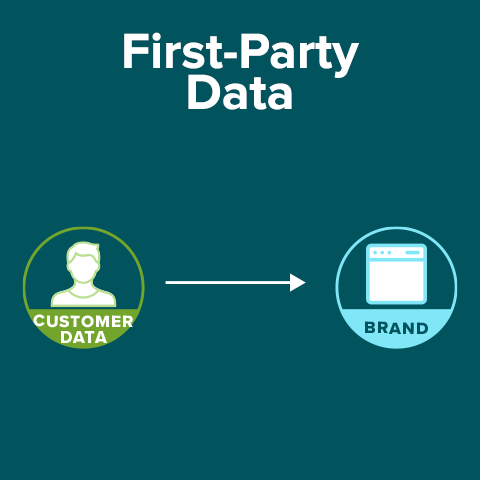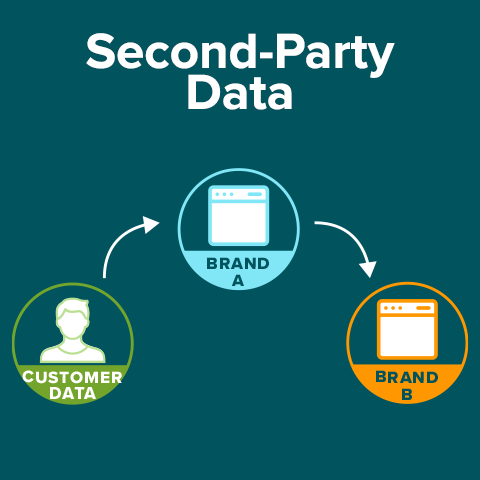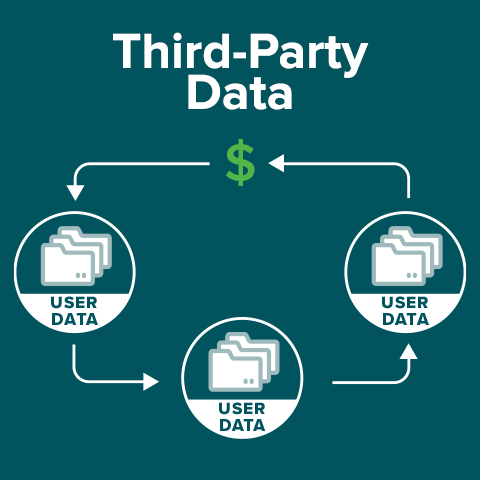
What Is First-Party Data? (Why It’s Better Than Third-Party Data)
Oct 11, 2022|Read time: 5 min.
Key Points
- Businesses collect first-party data directly from their own customers.
- First-party cookies are a variety of first-party data.
- First-party data has major business benefits for organizations of all sizes.
If you want to optimize your digital marketing efforts, deliver more personalized experiences across the customer journey, and strengthen customer relationships, then learn everything you can about first-party data.
As data privacy laws tighten, marketing leaders must know how to comply with regulations and respect consumer privacy concerns. That means understanding the pros and cons of various data sources, and how to implement a secure data management program to support your marketing strategy.
In this article, we’ll cover what first-party data is and how it’s different from other types of customer information.
What are the different types of customer data?
There are four main types of customer data: zero-party data, first-party data, second-party data, and third-party data.
First-party, second-party, and third-party data don’t differ much in type, but there are benefits for marketers who leverage their own first-party data. Plus, with third-party cookies banned or blocked by default on many web browsers and platforms, the importance of this data has never been more evident.



What is first-party data?
First-party data definition: Audience information that companies collect from website visitors, newsletter subscribers, customers, and social media followers. Companies collect this firsthand data in the course of doing business. It is different from third-party data or third-party cookies.
This type requires direct customer interaction. There are many use cases for firsthand customer data because brands own the information. They might use automation to personalize email marketing campaigns and boost customer engagement. Or they could create retargeting ads based on customer behavior.
What is second-party data?
Second-party data definition: A kind of audience information that is not collected by the business itself. Organizations source this data from trusted partners and between organizations with shared target audience segments. It can also involve customer profiles with a formal agreement.
What is third-party data?
Third-party data definition: Data collected by an entity with no direct relationship to the audience it collects from. Data providers aggregate and stitch together public and non-public datasets that businesses can purchase.
Third-party cookies definition: Cookies created by domains you aren’t directly visiting. Third-party cookies power cross-site tracking, ad serving, and retargeting. Different from first-party cookies, which we’ll discuss later.
What is zero-party data?
Zero-party data is information customers voluntarily provide to a company. Usually this comes from lead forms, and includes names, emails, addresses, and phone numbers.
Examples of first-party data
Here are some specific types of data marketers collect first-hand:
- Coupon use data
- Location of customers
- Details of customer support inquiries
- Brand interaction on social platforms
- Age, education, employment, marital status, and other demographic data
- Interests like preferred content, product categories, individual products
- Items website visitors download, like documents, PDFs, and other materials
- Purchase history including subscriptions, cross-sells, upsells, individual purchases, etc.
How is first-party data collected?
First-party data is collected at all touch points between a business and its individual customers. Whether it’s a transaction, follow-up email, newsletter sign-up, or data collected from the company’s website, these are all methods by which this information is accessed.
Personal data can also be compiled in customer data platforms (CDP), or databases that store all the customer information in one central place. Marketers can then pull relevant customer data to create targeted campaigns, assess the audience, and personalize customer outreach. There are several sources of customer data.
The most common sources are:
- A company’s website
- Customer reviews
- Social media platforms
- Mobile apps
- Online surveys
- Point of sale or CRM data
- SMS/text messaging data
- Call centers
- Customer operations
First-party data vs first-party cookies
You can think of first-party data as the overall category, with first-party cookies falling under that category. First-party cookies are also different from third-party cookies.
First-party cookies definition: Cookies directly stored by a website when you visit, which allow the collection of data for analytics, language settings, and user experience-related functionality. The key difference between first and third-party cookies is that first-party cookies cannot be used for user tracking across other sites.
Some typical examples of first-party cookies include the sign-in credentials, language preferences, and any items you put in the visited site’s shopping cart.
Deactivating first-party cookies on a site with login functionality means you have to log in each time you visit.
Value of Organic Search White Paper
See how an investment in organic search delivers ROI that compounds over time.
What are the marketing benefits of first-party data?
As you know, third-party cookies’ days are numbered so it’s a great time to reorient your marketing efforts around first-party data. There are many benefits, including optimizing marketing strategy impact, reducing the cost to gather customer data, and ensuring compliance with privacy regulations such as GDPR in the EU, CCPA in California.
Read about all the benefits of first-party data for your business.
Building a first-party data strategy
First-party data is incredibly important for businesses and that’s why it’s vital to have a strategy in place. To learn how to optimize its collection and operationalize it, see our guide to building a first-party data strategy.
Final thoughts
Before you can maximize your first-party collection and make it work for your business, you need to understand the types of data, how they function, and how they relate. With this information in hand, it’s time to focus on data-driven marketing that builds better brand experiences.




